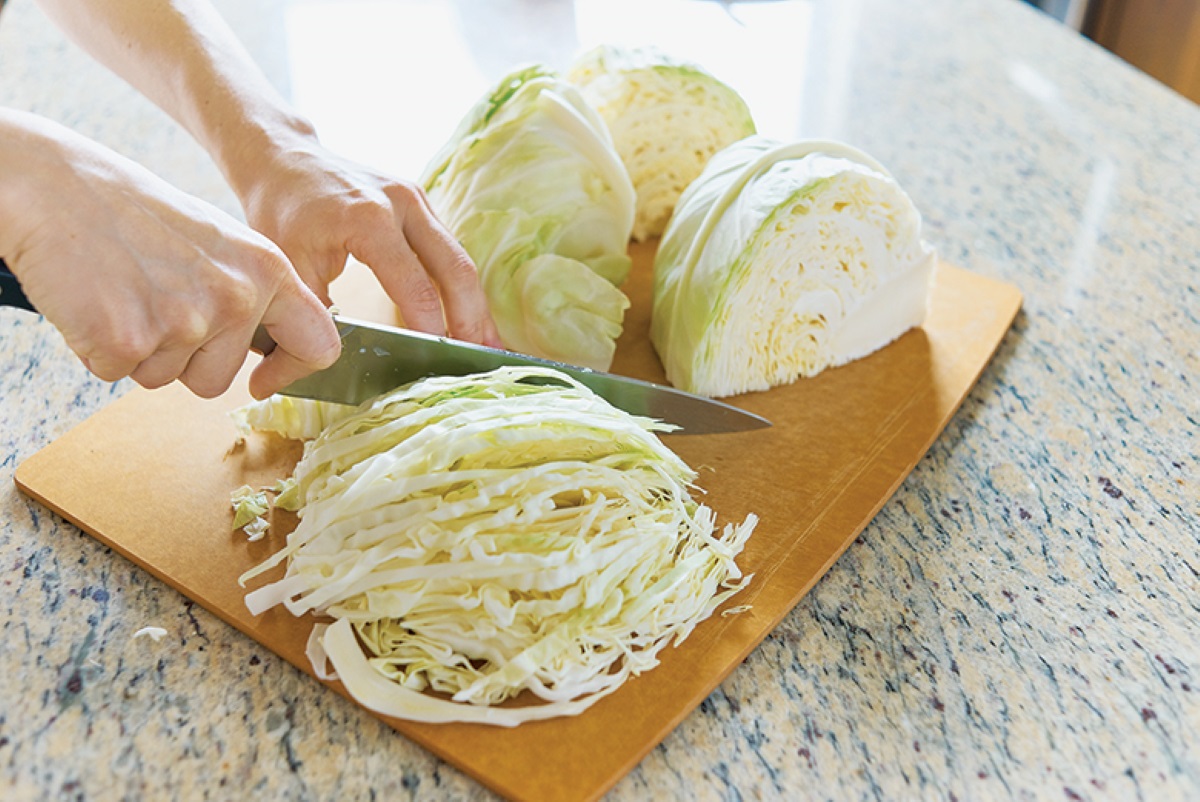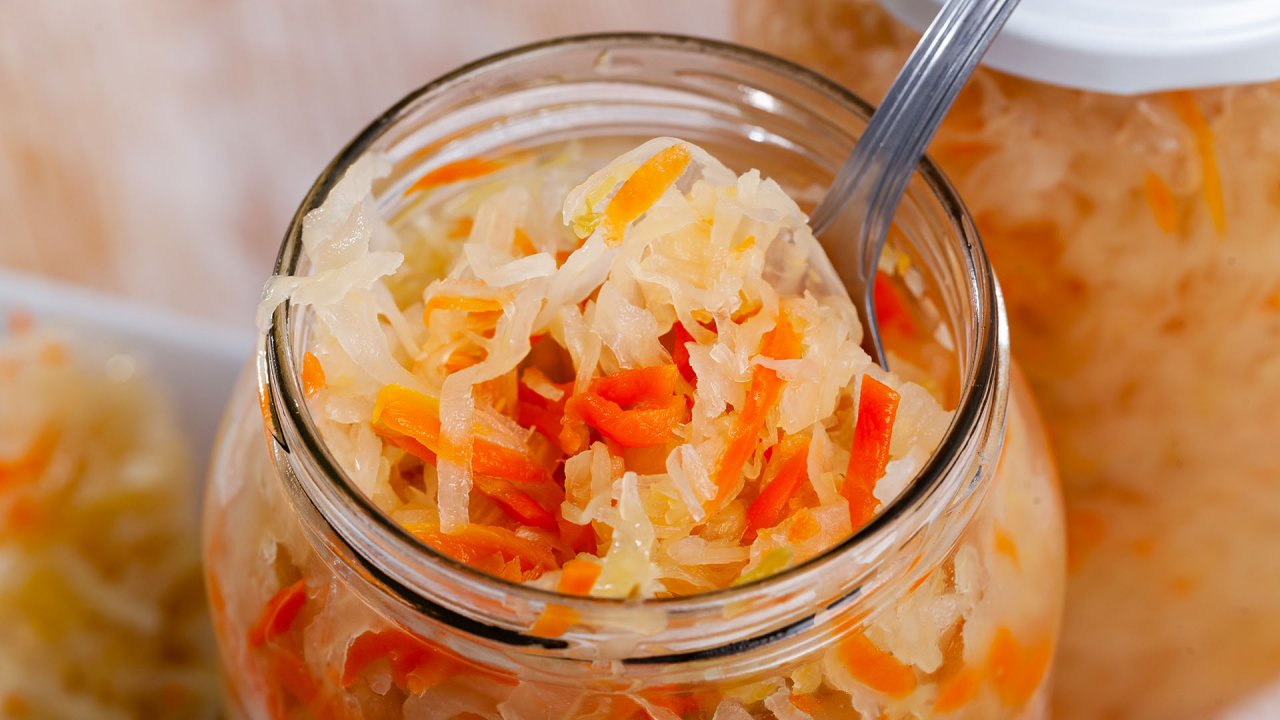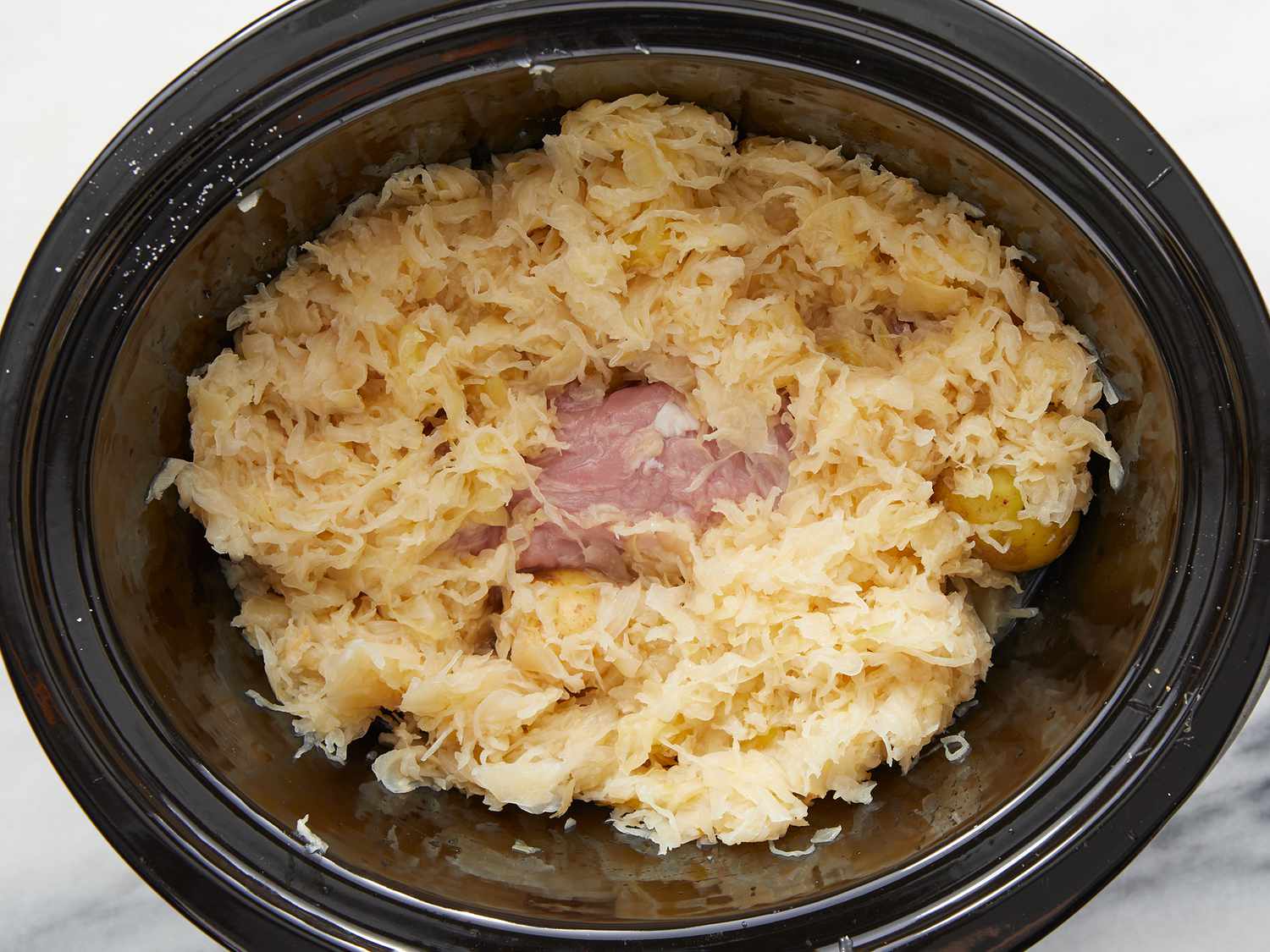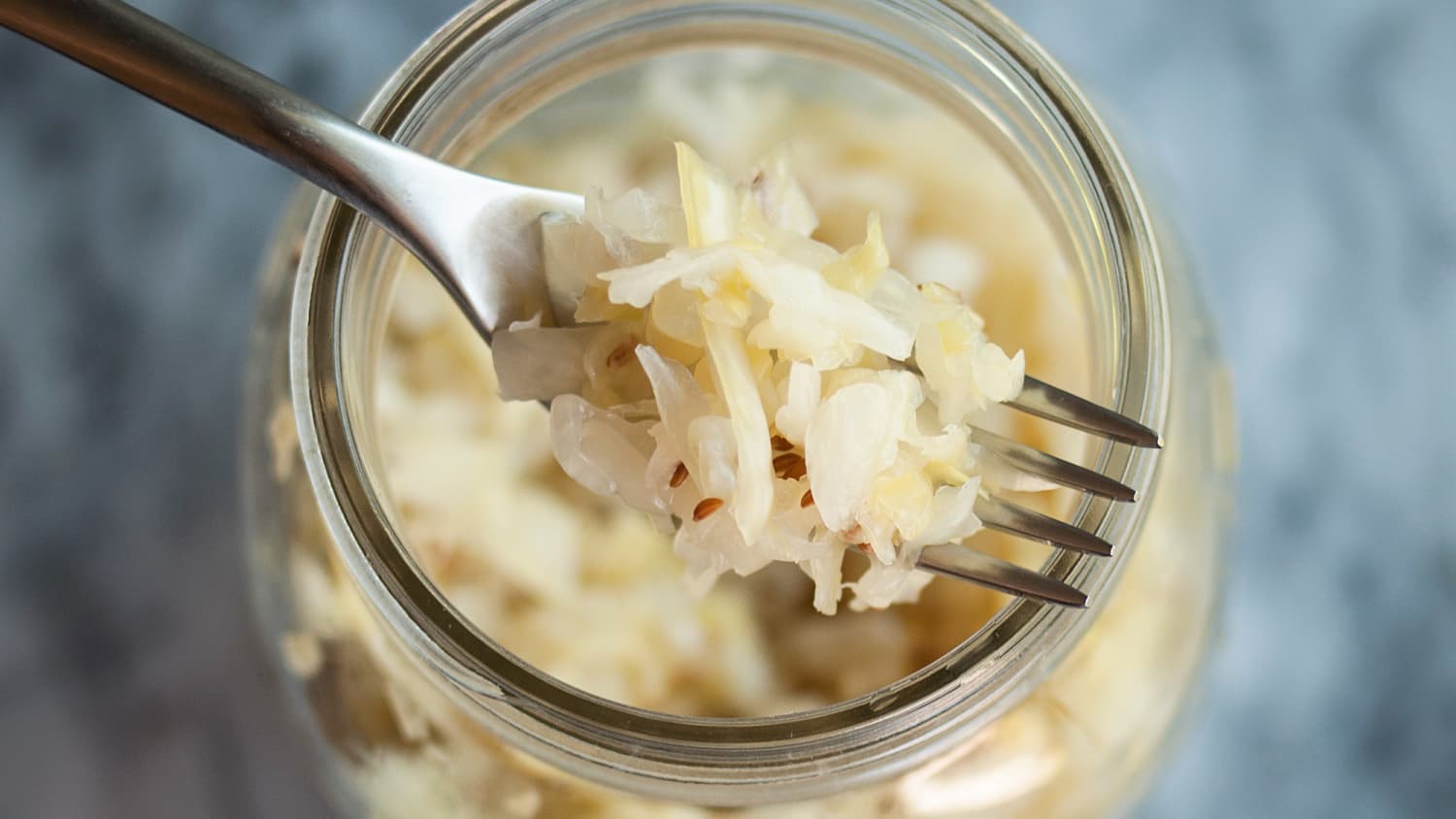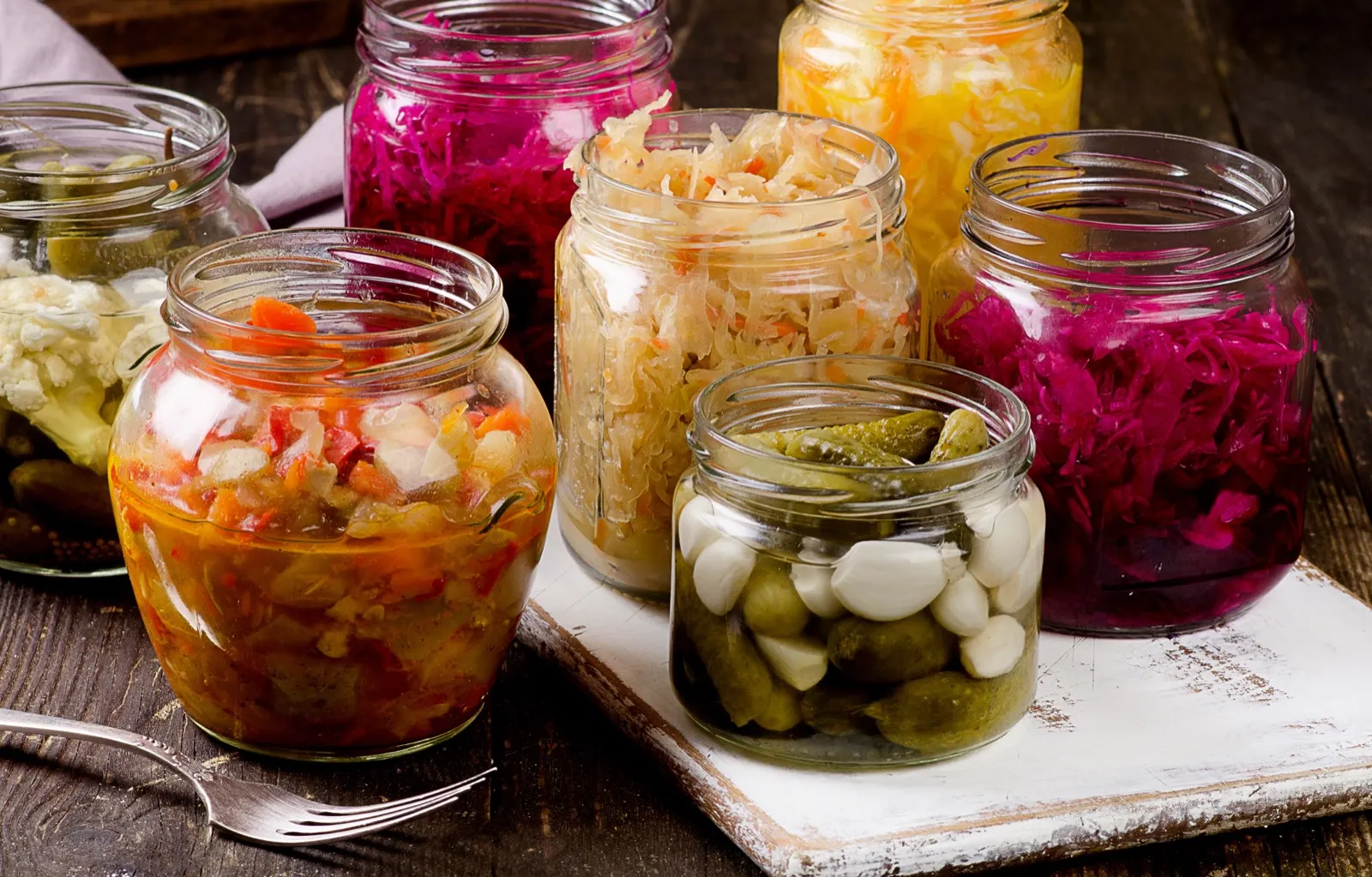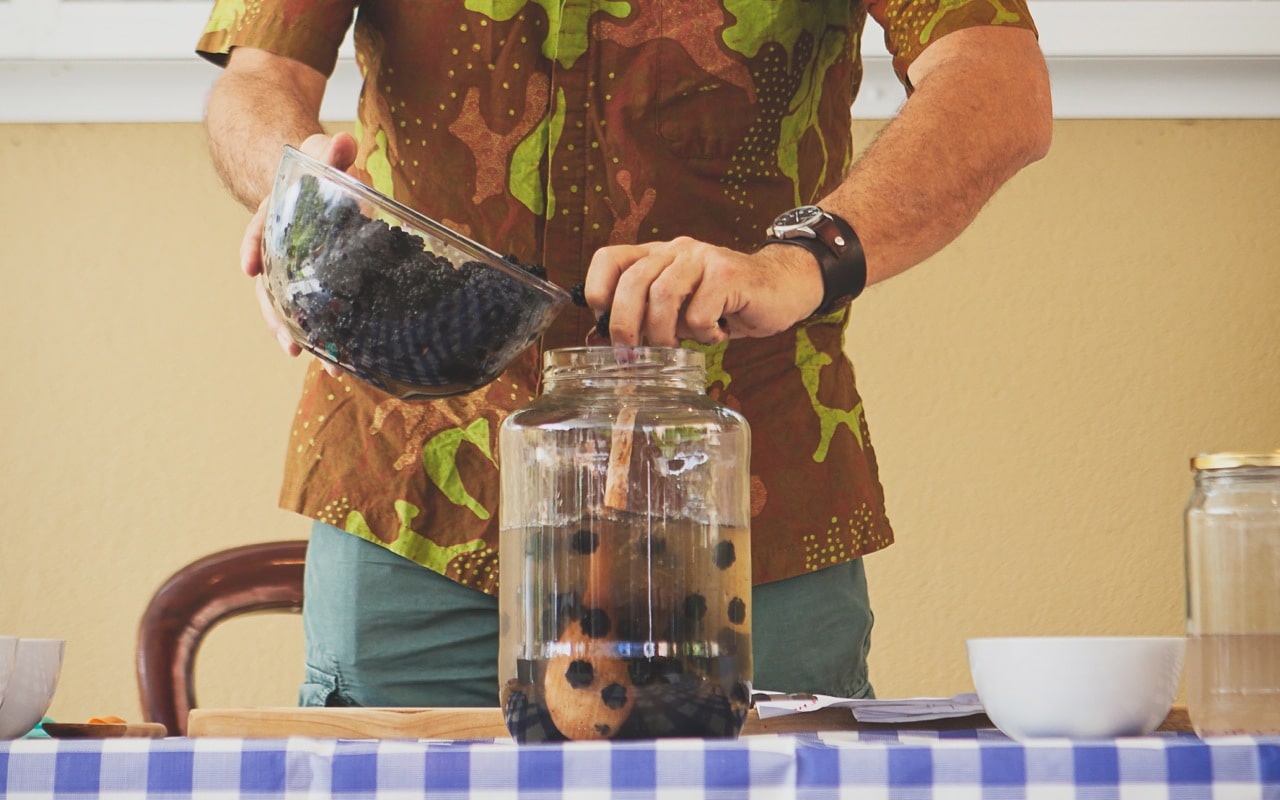Making sauerkraut at home is easier than you think. With just cabbage, salt, and a bit of patience, you can create this tangy, crunchy delight. Fermentation not only enhances flavor but also boosts gut health with probiotics. This guide will walk you through each step, ensuring your sauerkraut turns out perfect every time. Whether you're a seasoned cook or a kitchen newbie, you'll find this process simple and rewarding. Get ready to transform humble cabbage into a delicious, nutritious staple that can elevate any meal. Let's dive into the world of homemade sauerkraut and start fermenting!
What You Will Need to Make Homemade Sauerkraut
- 2 pounds fresh cabbage
- 1 tablespoon sea salt or kosher salt
- Optional: 1 teaspoon caraway seeds for flavor
Essential Tools for Crafting Sauerkraut
Tools Needed to Master the Art of Homemade Sauerkraut
- Large mixing bowl: For combining cabbage and salt.
- Cutting board: Essential for chopping cabbage.
- Sharp knife: To finely slice the cabbage.
- Measuring spoons: For accurate salt measurement.
- Large jar or crock: To ferment the cabbage.
- Fermentation weights: Keeps cabbage submerged in brine.
- Clean cloth or towel: Covers the jar during fermentation.
- Rubber band or string: Secures the cloth over the jar.
- Wooden spoon or tamper: Packs cabbage tightly into the jar.
- Kitchen scale: Optional but helpful for precise measurements.
Use fresh cabbage, salt, and a clean jar. Shred cabbage, mix with salt, pack tightly in jar. Ensure cabbage stays submerged in its liquid to ferment properly. Store in a cool, dark place.
The Importance of Making Homemade Sauerkraut
Homemade sauerkraut offers probiotics that aid digestion and boost immunity. Fermenting cabbage at home ensures no preservatives or additives.
Creating sauerkraut at home allows for custom flavors and textures. It's a cost-effective way to enjoy a nutritious and delicious condiment.
Step-by-Step Guide to Homemade Sauerkraut
Mastering the Art of Homemade Sauerkraut
Ingredients:
- Cabbage (1 medium head)
- Salt (1-3 tablespoons)
- Caraway seeds (optional, 1 tablespoon)
Equipment:
- Large bowl
- Knife
- Cutting board
- Fermentation jar or mason jar
- Weight (like a smaller jar or a fermentation weight)
- Cloth or lid
Step-by-Step Guide:
-
Prepare the Cabbage:
- Remove the outer leaves of the cabbage.
- Cut the cabbage into quarters and remove the core.
- Slice the cabbage into thin strips using a knife or mandoline.
-
Weigh the Cabbage:
- Place the sliced cabbage in a large bowl.
- Weigh the cabbage to determine the amount of salt needed. Use about 1 tablespoon of salt per 1.75 pounds of cabbage.
-
Massage the Cabbage:
- Sprinkle the salt over the cabbage.
- Use your hands to massage the cabbage for about 10 minutes until it becomes soft and juicy.
- If using, add caraway seeds during this step.
-
Pack the Cabbage:
- Transfer the cabbage and its juices into a fermentation jar.
- Press the cabbage down firmly to remove any air pockets.
- Ensure the cabbage is submerged in its own brine.
-
Add a Weight:
- Place a weight on top of the cabbage to keep it submerged.
- Use a smaller jar filled with water or a fermentation weight.
-
Cover the Jar:
- Cover the jar with a cloth secured with a rubber band or use a lid.
- If using a lid, ensure it is not tightly sealed to allow gases to escape.
-
Fermentation:
- Place the jar in a cool, dark place.
- Let the cabbage ferment for 1-4 weeks.
- Check daily to ensure the cabbage remains submerged in brine.
- Skim off any scum that forms on the surface.
-
Taste Test:
- After 1 week, start tasting the sauerkraut.
- Continue fermenting until it reaches your desired flavor and texture.
-
Store the Sauerkraut:
- Once fermented, transfer the sauerkraut to the refrigerator.
- Store in an airtight container.
- Sauerkraut can last for several months when refrigerated.
-
Enjoy:
- Use your homemade sauerkraut as a topping for sandwiches, side dish, or in various recipes.
Your Sauerkraut Adventure Begins Now
Making homemade sauerkraut isn't just about fermenting cabbage. It's about embracing a tradition that brings flavor and health benefits to your table. With just cabbage, salt, and a bit of patience, you can create a tangy, crunchy delight that enhances any meal. Remember to keep everything clean, pack the cabbage tightly, and let it ferment in a cool, dark place. Taste it as it ferments to find your perfect level of tanginess. Once it's ready, store it in the fridge and enjoy it with your favorite dishes. Homemade sauerkraut is a simple, rewarding project that connects you to a rich culinary heritage. So grab a cabbage, some salt, and start your sauerkraut journey today. Happy fermenting!
Frequently Asked Questions About Sauerkraut
What exactly is sauerkraut?
Sauerkraut is fermented cabbage, known for its tangy flavor and health benefits. Fermentation here means letting the cabbage mix sit until it naturally ferments, thanks to beneficial bacteria. This process not only preserves the cabbage but also boosts its nutritional value.
How long does making homemade sauerkraut take?
From start to finish, patience is key. You'll need about 20 minutes to prepare everything. After that, the fermentation magic happens over 3 to 6 weeks. Taste testing is your best bet to find that perfect tanginess.
What do I need to start my sauerkraut journey?
Grab some fresh cabbage, quality salt (sea or kosher), and a clean, airtight jar. That's your basic toolkit. For flavor twists, think about adding caraway seeds, garlic, or juniper berries.
Can I make sauerkraut without special equipment?
Absolutely! No fancy gadgets required. A sharp knife, a sturdy bowl for mixing and mashing, and a clean jar for fermenting will do the trick. Just ensure everything is super clean to avoid unwanted bacteria joining the party.
Why is my sauerkraut not fermenting?
Several culprits could be at play. Too much salt can slow down fermentation, while too little might not prevent harmful bacteria from growing. Temperature also matters; too cold, and fermentation crawls. Aim for a cozy spot around 65-75°F (18-24°C) for best results.
How do I know if my sauerkraut has gone bad?
Trust your senses. Off smells, colors, or flavors are red flags. Mold on top? Scoop it out carefully. If the kraut underneath smells and tastes fine, you're likely good to go. When in doubt, better safe than sorry.
Can sauerkraut be stored without refrigeration?
Once it's reached your desired sourness, refrigeration slows fermentation, keeping the flavor stable. Without it, the sauerkraut will continue fermenting, possibly leading to over-sourness or spoilage. For long-term storage, keep it chilled.
